Differences between cultivars of late autumn flowering Mahonia x media are not readily apparent despite residence in this garden for a decade and longer. The evergreens’ upright stance and prickly foliage is identical (or nearly so) between ‘Winter’s Sun’, ‘Charity’, and ‘Underway’, and only the lack of spines on the more recently planted ‘Marvel’ is distinct.
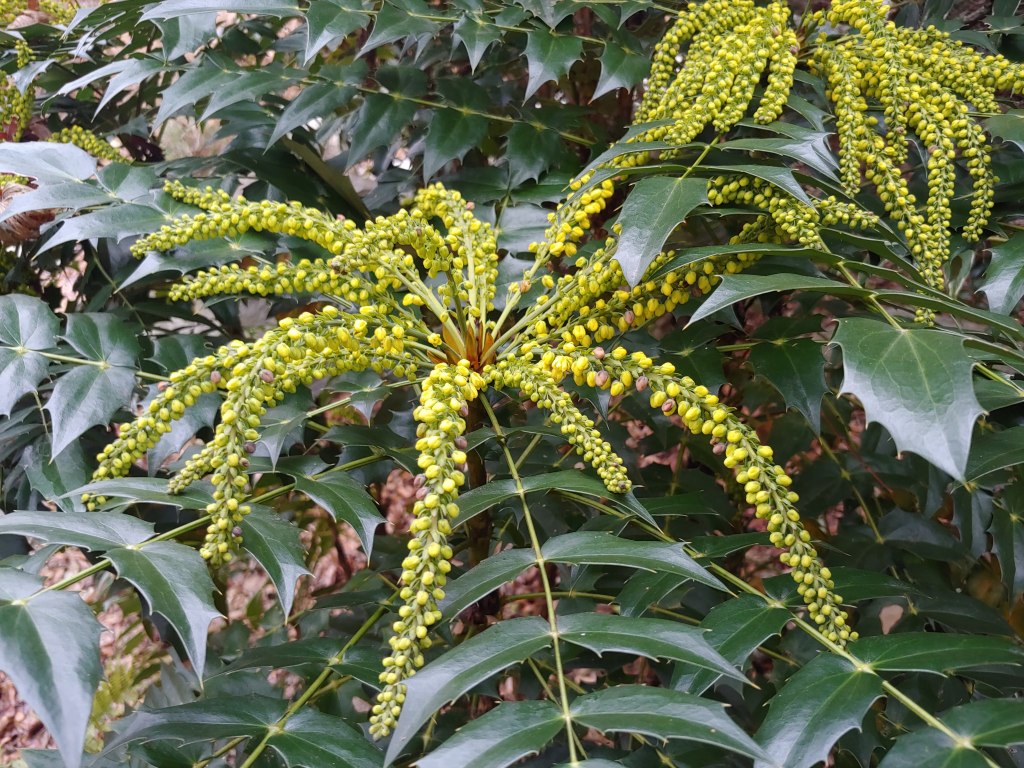
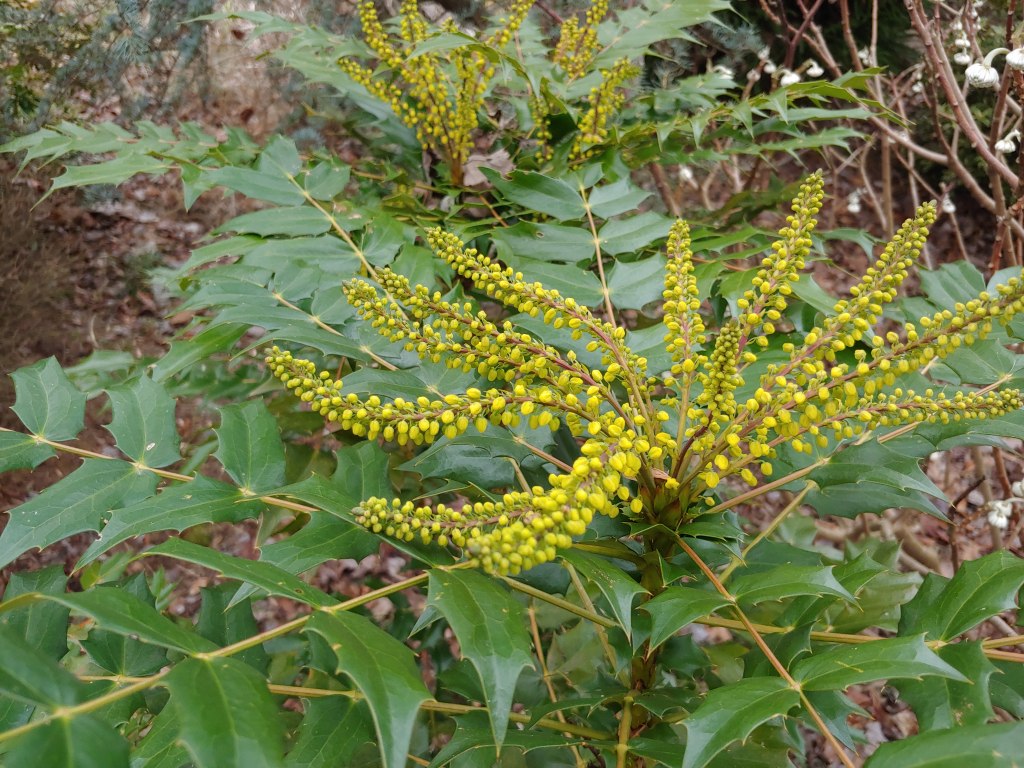

With such similarities, my collector’s impulse to plant more mahonia hybrids has been discouraged. Several narrow leafed, early autumn flowering mahonias have been planted in recent years, though with limited success due to their very marginal cold hardiness. ‘Soft Caress’ (Mahonia eurybracteata ‘Soft Caress’) survived several winters in the garden, though it diminished in size annually until it nearly perished in winter temperatures that dropped several degrees below zero (Fahrenheit). In fact, when the carcass was dug out, roots were alive, but too many years had been wasted to give ‘Soft Caress’ a fourth chance.
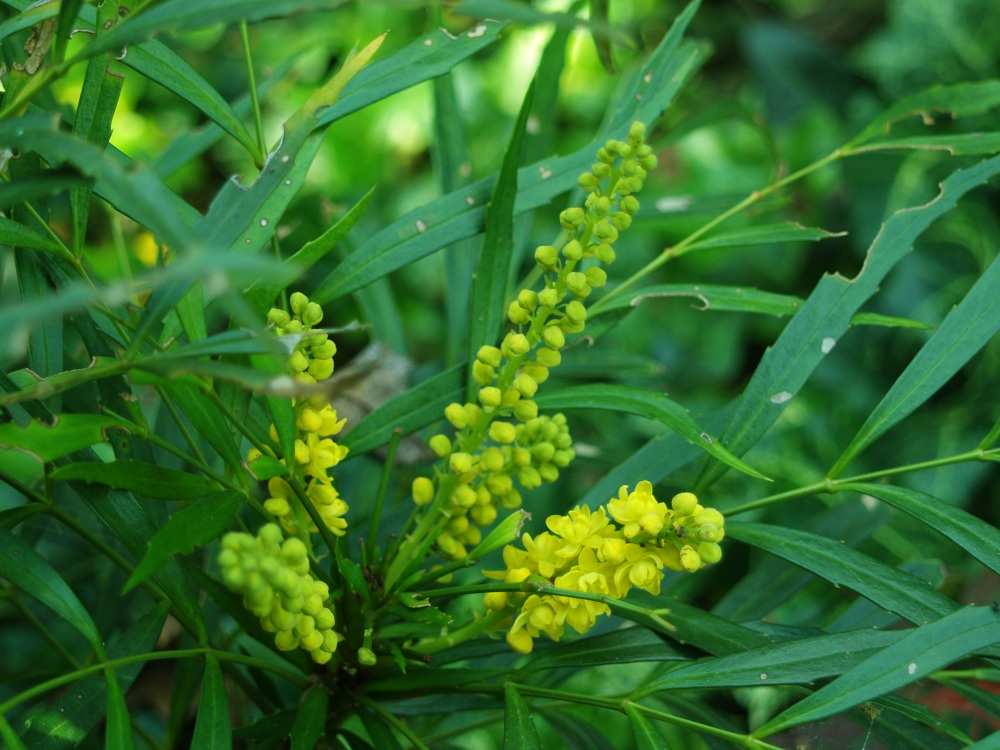
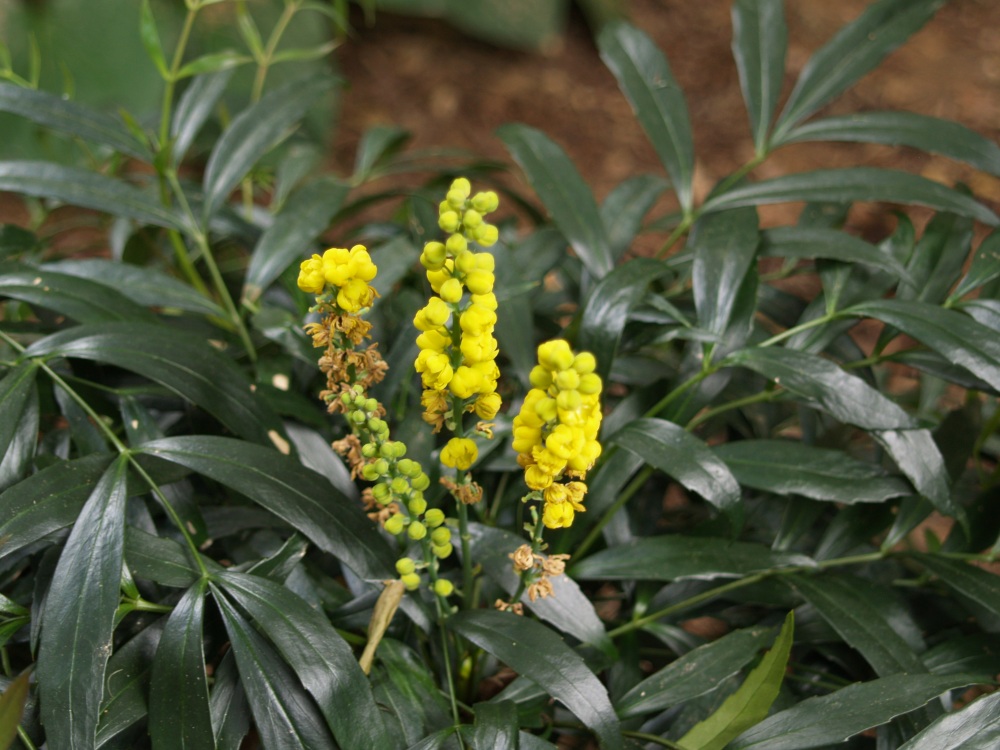
In the case that cold hardiness had been lost in breeding, I planted the larger growing ‘Narihira’ (Mahonia eurybracteata ‘Narihira’), but it also failed, even more quickly. Not easily discouraged (or unwilling to accept the obvious), ‘Beijing Beauty’ (Mahonia eurybracteata ‘Beijing Beauty’) was planted, and with better results in a more protected space close to the house. Here, flowering is disappointing, probably due to too much shade, and sparse new growth indicates that the mahonia is surviving rather than growing.
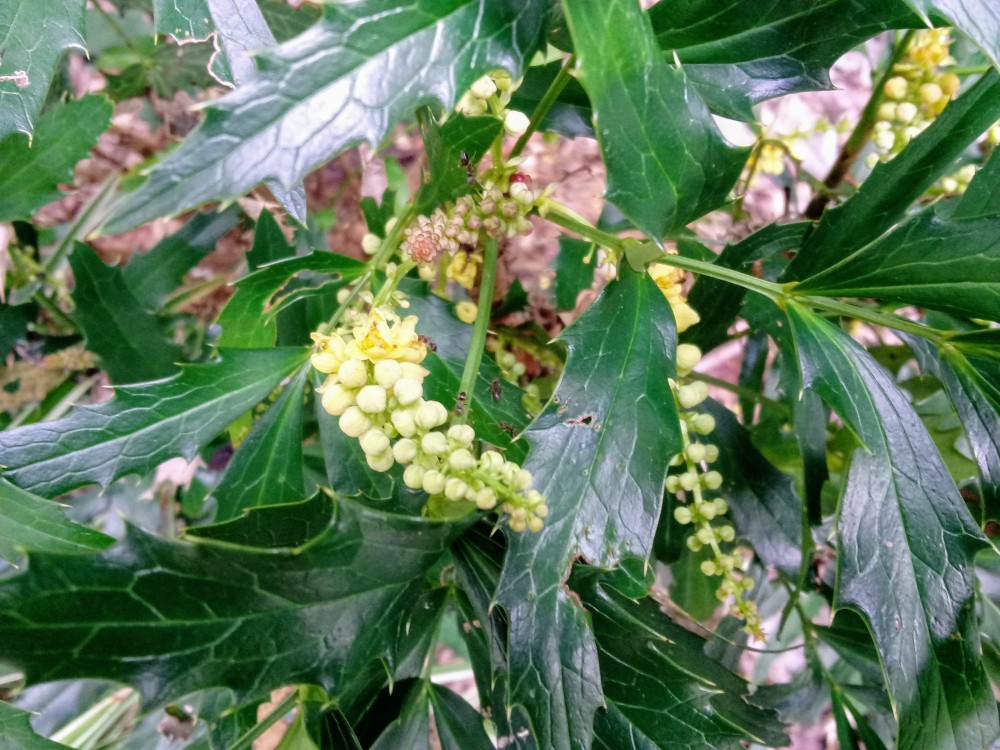
No doubt, I’ll be tempted as other mahonias become available, and frequently I’ve considered planting Oregon grapeholly (Mahonia aquifolium), that was a disappointment in my first garden with frequently spotted and half browned leaves. I don’t believe my experience was exceptional, and rarely do I see this mahonia offered for sale in garden centers in recent years. But, if I do, I’ll give it another try.
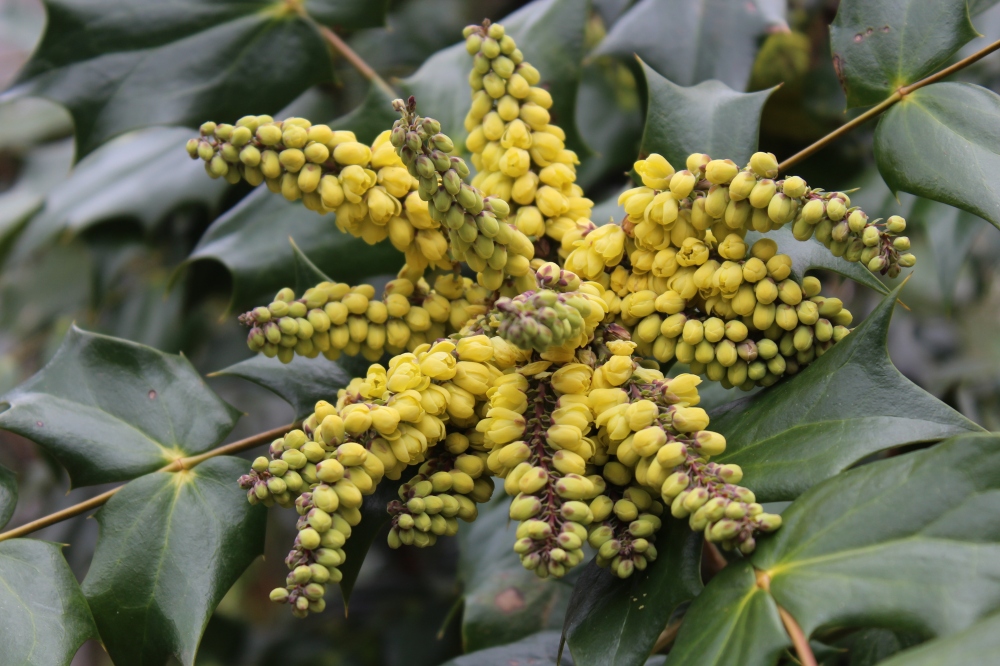
Appropriately last on the list, is the common leatherleaf mahonia (Mahonia bealei). I’ve confirmed that this late winter flowering mahonia will dependably spread from seed, though I’m unsure if this warrants its designation as invasive. Leatherleaf mahonia is the only mahonia that flowers in this garden at a time that it can dependably be pollinated by bees, so highly ornamental fruits (below) that are popular with birds are regularly seen by late spring, but rarely on other mahonias. The sprawling habit of leatherleaf mahonia is a perfect fit for this informal garden, and I admit that despite indications that it could spread beyond its welcome, I’ve allowed several seedlings to remain.
